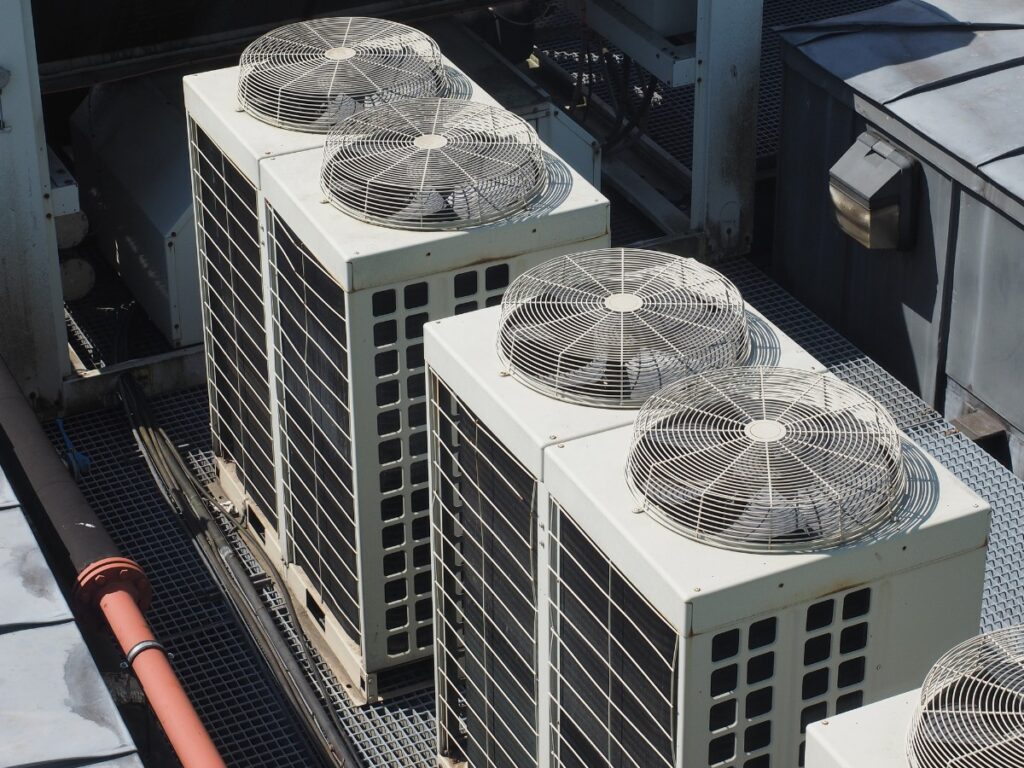Ensuring proper ventilation in your air conditioning system is crucial for maintaining a healthy and comfortable indoor environment.
In this guide, TOP AC Inc. will provide valuable information on the importance of ventilation, common ventilation challenges, and practical solutions to optimize air circulation and improve indoor air quality in your home or office. By the end of this post, you will clearly understand how to achieve optimal ventilation in your air conditioning system.
Understanding the Basics of Ventilation in AC Systems
Any high-quality air conditioning system not only cools your home but also plays a vital role in maintaining proper ventilation. Proper ventilation is essential to ensure good indoor air quality and to remove pollutants and odors from your home. Understanding the basics of ventilation in AC systems can help you make informed decisions about the type of system that suits your needs.
Role of Ventilation in an Air Conditioning System
Regarding your air conditioning system, ventilation is responsible for circulating air throughout your home, helping maintain a comfortable and healthy indoor environment. Proper ventilation also helps to regulate humidity levels and remove airborne pollutants, allergens, and odors, ensuring that you and your family breathe clean, fresh air in your home.
Types of Ventilation available in AC Systems by TOP AC Inc
There are various types of ventilation systems available in air conditioning units by TOP AC Inc., each with unique features and benefits. Assume that the choice of ventilation system will depend on the size and layout of your home and your specific air quality needs.
- Central Ventilation: This system uses a network of ducts and vents to circulate air throughout your home, ensuring consistent ventilation in every room.
- Exhaust Ventilation: This system expels stale air from your home, creating negative pressure to pull in fresh outdoor air.
- Supply Ventilation: This system brings fresh air into your home while the stale air is expelled, helping to maintain a constant flow of clean air.
- Energy Recovery Ventilation: This system helps to maintain comfortable temperatures and humidity levels while providing fresh air, making it energy efficient.
- Spot Ventilation: This system provides ventilation to specific areas of your home, such as bathrooms and kitchens, where moisture and odors are most prevalent.
It is essential to consult with a professional from TOP AC Inc. to determine the best ventilation system for your specific needs.
Evaluating Ventilation Needs for Different Spaces
However, when evaluating ventilation needs for different spaces, the requirements may vary based on the area’s size, occupancy, and function. A thorough assessment of the ventilation needs of each space is essential to ensure the health and comfort of the occupants. You can refer to the document on Heating, Ventilation, and Air Conditioning (HVAC) Systems in various settings.

Tips for Determining Ventilation Needs in Commercial Spaces
When determining ventilation needs in commercial spaces, consider factors such as the size of the space, the number of occupants, and the nature of activities carried out in the area. You can use the formula Q = V x A to calculate the required airflow (Q) based on the volume of the space (V) and the air changes per hour (A). Ensure that the ventilation system in the commercial space is designed to meet the specific requirements and complies with building codes and standards. Any compromises in ventilation can lead to poor indoor air quality, which can impact the health and productivity of the occupants.
Guidelines for Ventilation in Residential Spaces by TOP AC Inc
Regarding ventilation in residential spaces, TOP AC Inc. recommends considering factors such as the number of occupants, the layout of the living area, and potential sources of indoor air pollutants. Ensure that your ventilation system provides adequate fresh air supply and is equipped with effective filtration to remove airborne contaminants. Properly ventilated homes can help reduce the risk of indoor air pollution and improve indoor air quality, creating a healthier living environment for you and your family.
Steps to Improve Ventilation in Your Air Conditioning
Despite having a top-of-the-line air conditioning system, poor ventilation can undermine its effectiveness. Here are some steps to improve the ventilation in your air conditioning system and ensure optimal performance and air quality.
Advanced Ventilation Techniques for AC Systems
Several options exist for advanced ventilation techniques for AC systems. Here are some techniques to improve ventilation in your air conditioning system:
- Increase Airflow: One way to improve ventilation in your air conditioning system is to increase airflow. This can be achieved by cleaning or replacing air filters, ensuring that vents are not obstructed, and optimizing the layout of your space to promote better airflow.
- Implement Exhaust Systems: Installing exhaust systems can help remove stale air and moisture from your space, improving ventilation and air quality.
- Use Natural Ventilation: Natural ventilation techniques such as opening windows and ceiling fans can help improve airflow and reduce reliance on mechanical ventilation systems.
- Invest in Ventilation Upgrades: Consider upgrading your air conditioning system with advanced ventilation technologies, such as energy recovery ventilators (ERVs) or heat recovery ventilators (HRVs), which can help improve ventilation and energy efficiency.
TOP AC Inc’s Innovative Solutions for Ventilation Improvement
At TOP AC Inc., we understand the importance of ventilation in air conditioning systems. That’s why we offer innovative solutions to help improve ventilation in your AC system. Our advanced ventilation technologies and expert technicians can assess your needs and provide tailored solutions to enhance ventilation, air quality, and overall system performance.
A Guide to Ventilation in Air Conditioning by TOP AC Inc
You have learned about the importance of proper ventilation in your air conditioning system and how it can improve indoor air quality. By following the guidelines provided by TOP AC Inc., you can ensure that your air conditioning system is functioning efficiently and that the air circulating in your home or building is clean and healthy. Remember, proper ventilation is crucial for your family’s or occupants’ well-being, so implement these tips in your air conditioning system for optimal results.
FAQ
Q: What is the importance of ventilation in air conditioning?
Ventilation is crucial in air conditioning systems as it helps to circulate and distribute the cooled air throughout the space, ensuring even temperature distribution and comfort. Proper ventilation also helps to remove indoor air pollutants and odors, promoting a healthier indoor environment.
Q: How does ventilation affect energy efficiency in air conditioning?
Good ventilation in air conditioning systems can improve energy efficiency by ensuring that the cooled air is distributed effectively, reducing the need for the system to work harder to reach desired temperatures. Also, proper ventilation can reduce humidity levels, further improving the air conditioning system’s efficiency.
Q: What are some common ventilation issues in air conditioning systems?
Common ventilation issues in air conditioning systems include inadequate air circulation, which can lead to uneven cooling and discomfort, and poor indoor air quality. Additionally, improper ventilation can result in higher energy consumption and increased wear and tear on the air conditioning system. Regular maintenance and evaluation of ventilation systems can help proactively identify and address these issues.

